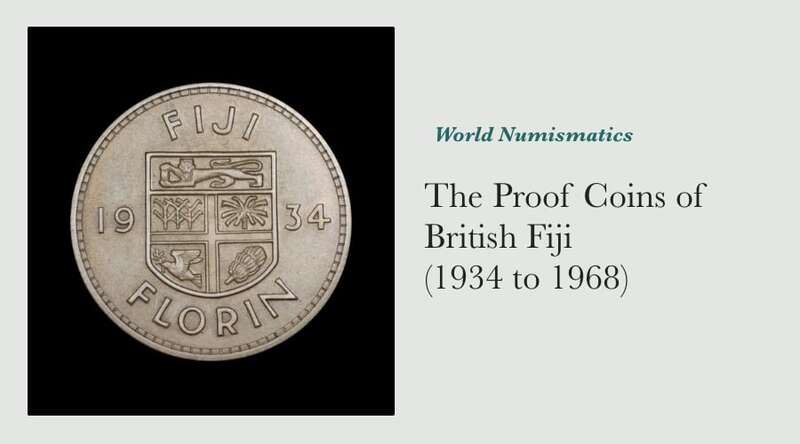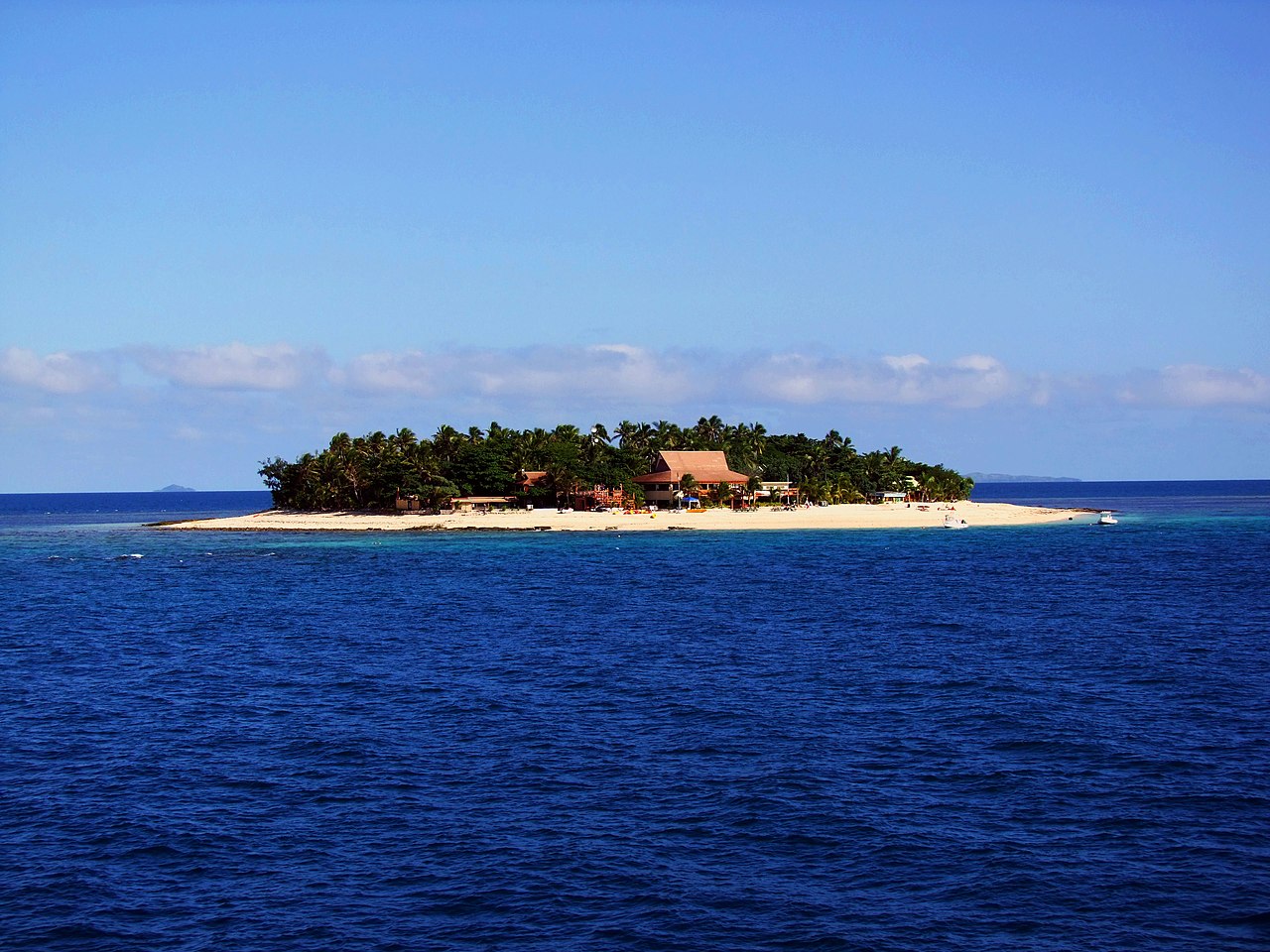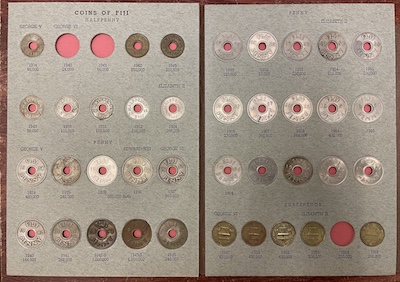The Proof Coins of British Fiji (1934 to 1968)

Fiji is an island nation in the Pacific Ocean, and is located around 2,000km north of New Zealand. Fiji is comprised of more than 300 islands, and has a population of slightly less than 1 million people.

Mamanuca Island. Source: Isderion
The Fijian chain of islands has been populated by humans since 2,000 BC, and became a British colony in 1874. Following 96 years of British rule, the island nation gained independence in 1970.
Coinage in Fiji Prior to 1934
Prior to 1874, most trade in Fiji was conducted by barter, it understood that coins were not used to any great extent.
English currency was made the sole legal tender in 1881; records show that between 1874 and 1884, a total of 10,000 pounds in British silver coins was sent to the colony.
Between 1910 and the early 1930’s, Australian coins circulated at the same value as their British equivalent. Once the exchange rate between these two currencies diverged, a distinctive coinage for Fiji was required.
The first denominations struck specifically for use in Fiji were the florin, shilling, sixpence, penny and halfpenny.
Large numbers of American troops were stationed in Fiji during World War II, which increased the need for circulating coins. Nearly all of the coins struck for Fiji were made by the Royal Mint in London, the San Francisco mint struck all Fijian coins in 1942 and 1943. The threepence was introduced into circulation in Fiji after World War II.
The reverse designs remained largely unchanged until 1968, after which Fiji’s British colonial coins were replaced by a series of equivalent decimal coins.
The Scope of a Complete Set of Fijian Coins

A “complete” set of Fijian colonial coins include 79 different coins across 6 denominations and struck across 34 years.
Due to the relatively modest size of the Fijian population when compared to most major developed countries, the average mintage figure for a Fijian pre-decimal coin is just a few hundred thousand.
The coin with the highest mintage is the 1965 penny (1.44 million), while just 20,000 florins were struck in 1938 and 1941.
There are several reasons why the British colonial coins of Fiji are popular with collectors - the fond regard that many visitors have for Fiji’s people; geography and climate undoubtedly supports collector demand. The press-in albums made by Dansco were also popular with Allied servicemen that came into contact with Fiji while serving in the Pacific theatre during the Second World War.
Once other collectors saw just how attractive a set looked once complete, demand for Fijian coins rose further during the boom days of coin collecting in the mid to late 1960’s.
A complete set of Fijian coins is challenging to complete in any condition, yet remains affordable and accessible to most collectors.
A Further Challenge - Fijian Proof coins (1934 to 1968)
The proof coins struck for Fiji between 1934 and 1968 are incredibly rare, attractive and historic.
Judging by their incredible rarity and superb quality, Fijian proof coins seem to fall under the umbrella category of “VIP proofs”, which is a term used to describe certain proof coins struck across the 20th century by the Royal Mint in London.
VIP proofs are quite different to and and much rarer than what might be described as “commercial” proof coins - proof coins struck for sale to collectors.
Although 20th century proof coins are incredibly popular with collectors in British Commonwealth countries, it is fair to say they are not as keenly studied in the United Kingdom, where they have at least 1,000 years of numismatic history to explore.
For this reason, I believe there is no generally-accepted definition of the term “VIP proof”.
Generally speaking, it is used to refer to single coins and sets struck by the Royal Mint that were intended as gifts for royalty, government dignitaries, Mint employees and other VIP’s.
Not only are there no publicly-available Mint records to show how many of these coins were struck, they do not even show when VIP proof coins were struck.
This makes it incredibly hard to determine just what the scope of a complete set of Fijian proof coins might be - we might think that VIP proofs were struck of each denomination in each year of production, but each date and denomination is only known to exist in proof form once it has been publicly offered for sale.
Other coins might exist and are just yet to be discovered, or the entire range may already be in the public domain. This is one of the appealing characteristics of this series - determined collectors are able to break new ground an contribute to numismatic knowledge by building a set over time.
The appeal of Fijian proof coins is demonstrated by the inclusion of a Fijian sixpence in a set of 18 coins that was struck by the Royal Mint for Princesses Elizabeth and Margaret during a visit to the Mint in 1937.
The coins to be included in that set were carefully selected - they each featured different animals from widespread parts of the Commonwealth, which Mint staff hoped would particularly appeal to the young royals. The Fijian sixpence included showed a turtle on the reverse.
The Jerome Remick Collection 
Jerome Remick was an American that had an avid interest in British Commonwealth coins - he wrote “The Guidebook & Catalogue of British Commonwealth Coins (1660 ~ 1969).”
When his collection was sold by Spink of London in October 2006, Spink stated in the preface that “Remick particularly liked proofs, of which there are an outstanding number in this collection. Remick took advantage of the abundance of coins available at the time to secure many great rarities. He started collecting in the 1940’s, in an age when supply was plentiful. Nearly every date and mint-mark of every issue from most of the series is present. It is impossible to believe that a new collector today could match this collection in depth.”
It is important to observe that despite Remick’s knowledge, connections and resolve, his collection did not include a single Fijian pre-decimal proof coin.